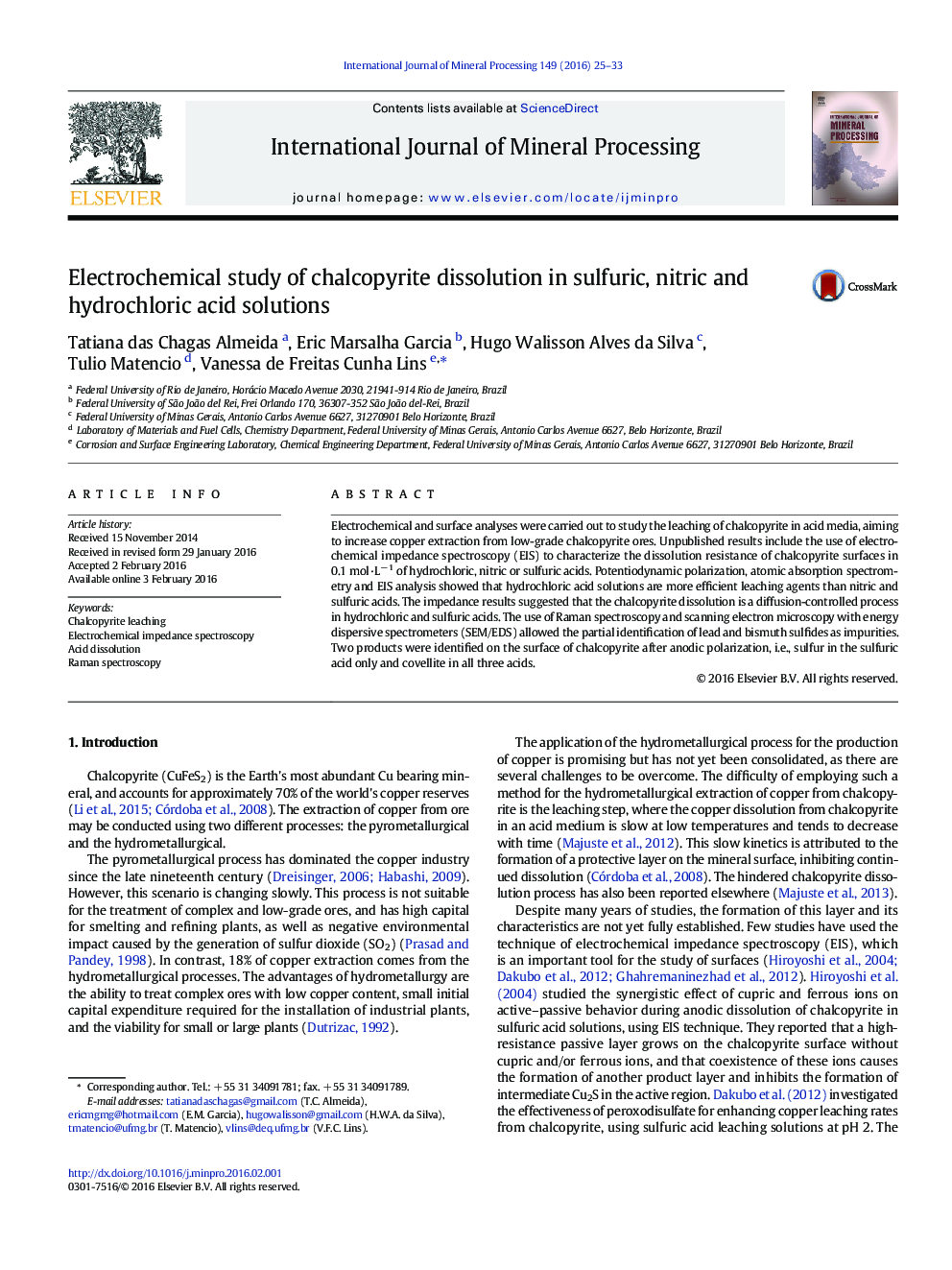| Article ID | Journal | Published Year | Pages | File Type |
|---|---|---|---|---|
| 213713 | International Journal of Mineral Processing | 2016 | 9 Pages |
•The acid dissolution of chalcopyrite is studied using electrochemical impedance spectroscopy.•The hydrochloric acid is a more efficient leaching agent than nitric and sulfuric acids.•Dissolution of chalcopyrite is controlled by diffusion.•Lead and bismuth sulfides were identified as impurities on the mineral surface.•Sulfur and covellite were identified as corrosion products on the mineral surface.
Electrochemical and surface analyses were carried out to study the leaching of chalcopyrite in acid media, aiming to increase copper extraction from low-grade chalcopyrite ores. Unpublished results include the use of electrochemical impedance spectroscopy (EIS) to characterize the dissolution resistance of chalcopyrite surfaces in 0.1 mol·L− 1 of hydrochloric, nitric or sulfuric acids. Potentiodynamic polarization, atomic absorption spectrometry and EIS analysis showed that hydrochloric acid solutions are more efficient leaching agents than nitric and sulfuric acids. The impedance results suggested that the chalcopyrite dissolution is a diffusion-controlled process in hydrochloric and sulfuric acids. The use of Raman spectroscopy and scanning electron microscopy with energy dispersive spectrometers (SEM/EDS) allowed the partial identification of lead and bismuth sulfides as impurities. Two products were identified on the surface of chalcopyrite after anodic polarization, i.e., sulfur in the sulfuric acid only and covellite in all three acids.
Graphical abstractFigure optionsDownload full-size imageDownload as PowerPoint slide
